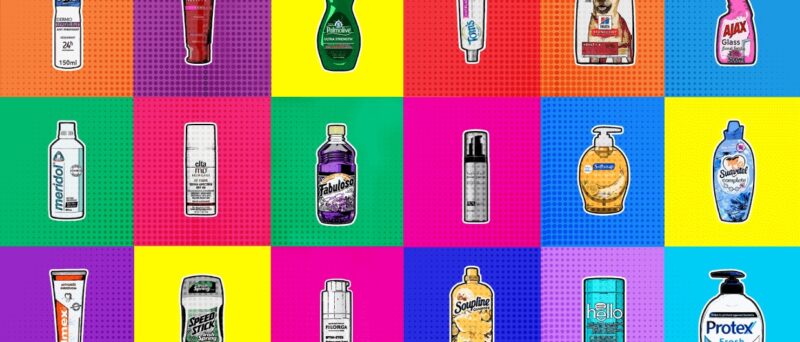Colgate-Palmolive, a global powerhouse in oral care, personal care, home care, and pet nutrition, has a massive product portfolio and an equally vast marketing footprint the company runs hundreds of campaigns annually, generating extensive media and CRM data.
With operations in over 200 countries and thousands of marketers and agencies working across regions, Colgate-Palmolive’s data ecosystem was anything but simple. Despite efforts to implement a unified brand taxonomy, each team had its own interpretation, leading to inconsistent structures, mismatched data, and reporting gaps.

To unlock the full value of its marketing data, Colgate-Palmolive needed a common data language that worked across every region, agency, and platform.
Complex Data, Many Massive Teams
Colgate-Palmolive’s data structure had evolved independently across regions, leading
to fragmented reporting and disconnected insights. Despite efforts to implement a standardized brand taxonomy, agency teams managed data independently, making it difficult to align campaigns across markets.
Without a common data language, teams struggled with:
- Mismatched taxonomies across global markets
- Time-consuming manual data cleanup to align reports
- Inconsistent full-funnel campaign tracking
- Delays in granular reporting and advanced analytics
To fully unlock the value of its global data, Colgate-Palmolive needed a single source of truth—one that could bridge the gap between regional teams and global reporting.
Connecting Systems Without Changing the Process
Rolling out a new global data standard is one thing—getting thousands of advertisers to follow it is another. The biggest challenge wasn’t just structuring data correctly, but doing so without disrupting how campaigns were built and launched. Having tested The Data Standards Cloud for internal agency workflows, WPP was eager to roll out a data standards framework across an enterprise brand.

Implementing an Agnostic, Workflow-Friendly Solution
To ensure a smooth and seamless rollout across global teams, Colgate-Palmolive turned to WPP who have been leveraging The Data Standards Cloud—an agnostic solution designed to integrate directly into existing systems without disrupting the established workflows. They knew they needed a tech solution that could be adopted by all teams, regardless of location or agency, while allowing them to continue working as they always had.
This approach would allow each team to operate in their familiar environments—whether they were launching, tracking, or reporting on campaigns—while the Claravine platform captured all data in the background.

Establishing a Centralized Taxonomy Team
Once the technology foundation was in place, the next critical step was to create a centralized global taxonomy—one that could work across all regions and all agency teams. Rather than dictating a rigid, top-down solution, Colgate-Palmolive built a dedicated Central Taxonomy Team to bridge the gap between brand and agency teams. The team focused on understanding how each group operated—their unique processes, challenges, and requirements for success—before defining a standardized data structure.
The team worked closely together to:
- Map out real-world campaign workflows, identifying how each team launched, executed, and reported on campaigns
- Gain buy-in from all stakeholders, ensuring that the standardized data framework meets the needs of every team, not just those at HQ
- Develop a shared data language that is aligned with existing processes, allowing teams to continue working efficiently while adopting a unified approach
- Ongoing management of the taxonomy, continuously refining and adapting it to address new requests and evolving needs
By structuring the taxonomy around how teams already operated, Colgate-Palmolive eliminated friction, creating a framework that felt seamless and natural rather than forced.
Unified Historical Data
The platform facilitated the cleanup and unification of Colgate’s historical campaign data, which had previously been fragmented and difficult to measure. With the platform in place, the teams were able to begin tracking all marketing efforts and also look back into past campaigns. The Taxonomy Team could now identify areas for reconciliation and gather better metrics for future initiatives. Additionally, by revisiting the processes the teams outlined during the taxonomy discovery phase, Colgate was able to start mapping a new, more efficient process that would improve campaign execution moving forward.
A+ for Agency Data Compliance
Within just a few months, Colgate-Palmolive saw a significant jump in their agencies’ data compliance, increasing from 20% to nearly 100%. Driven by their top agency WPP, this remarkable improvement significantly enhanced the consistency and accuracy of campaign data across the board. Beyond compliance, this also unlocked new insights—previously, the brand could only report on basic metrics like market, brand, channel, and vendor/platform. Now, they had access to richer data, including insights into the brand plan, target audience, goals, and the bigger picture of campaign performance. Best of all, this information was available in real-time, eliminating the delays of reporting weeks later.

Bi-Directional Integrations
The integration of bi-directional data flows between Claravine’s platform and popular campaign management tools like Google Display & Video 360 and Campaign Manager 360 made it easier for teams to work within their familiar systems while benefiting from automated data validation. Real-time checks on data inputs allowed teams to make corrections before campaign launches, while also providing opportunities to enrich data with detailed metadata for more granular reporting and insights.



